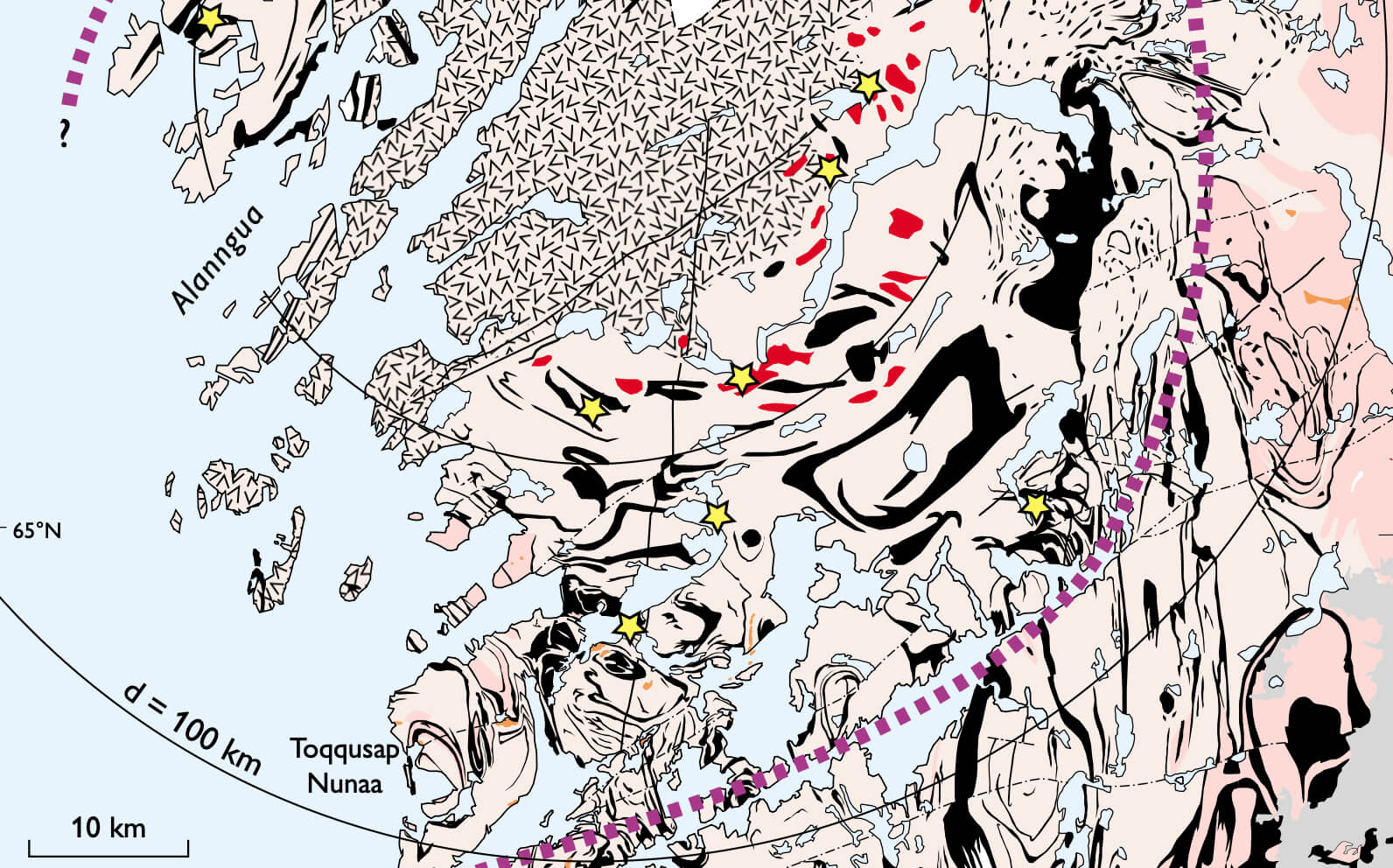
How to Cite
Share
Abstract
With the recent discovery of the giant, deeply eroded, 3 Ga Maniitsoq impact structure in southern West Greenland (Garde 2010), an enigmatic, c. 75 by 15 km large, curvilinear belt of undeformed norite intrusions with Ni-Cu mineralisation was re-interpreted as representing crustally contaminated melts derived from the mantle in the wake of the impact (Fig. 1; Garde et al. 2012). The norite belt (Nielsen 1976; Secher 1983) was discovered in the early 1960s by the mining and exploration company Kryolitselskabet Øresund A/S, and more than one hundred shallow exploration holes were drilled by the company in the period 1965–1971. The mineralisation has subsequently been investigated by Cominco Ltd., Falconbridge Ltd. and NunaMinerals A/S. In 2011, the re-interpretation of the norite belt, and recent availability of improved airborne geophysical exploration tools, prompted the Canadian company North American Nickel Inc. (NAN) to resume exploration.
How to Cite
Share
Copyright (c) 2013 Adam A Garde, John Pattison, Thomas F. Kokfelt, Iain McDonald, Karsten Secher

This work is licensed under a Creative Commons Attribution 4.0 International License.
Downloads
Edited by Ole Bennike, Adam A. Garde and W. Stuart Watt
This Review of Survey activities presents a selection of 17 papers reflecting the wide spectrum of activities of the Geological Survey of Denmark and Greenland, from the microscopic to the plate-tectonic level.
The Survey's activities in Denmark and surrounding areas are [...]









